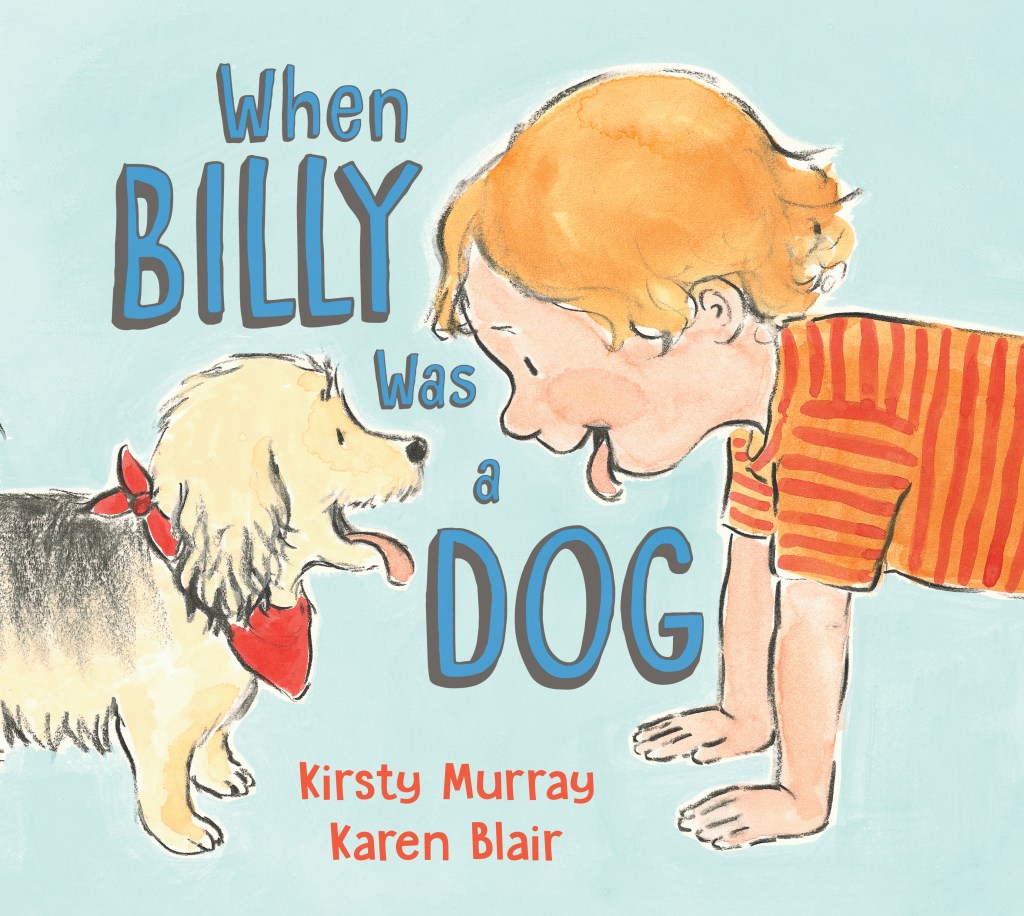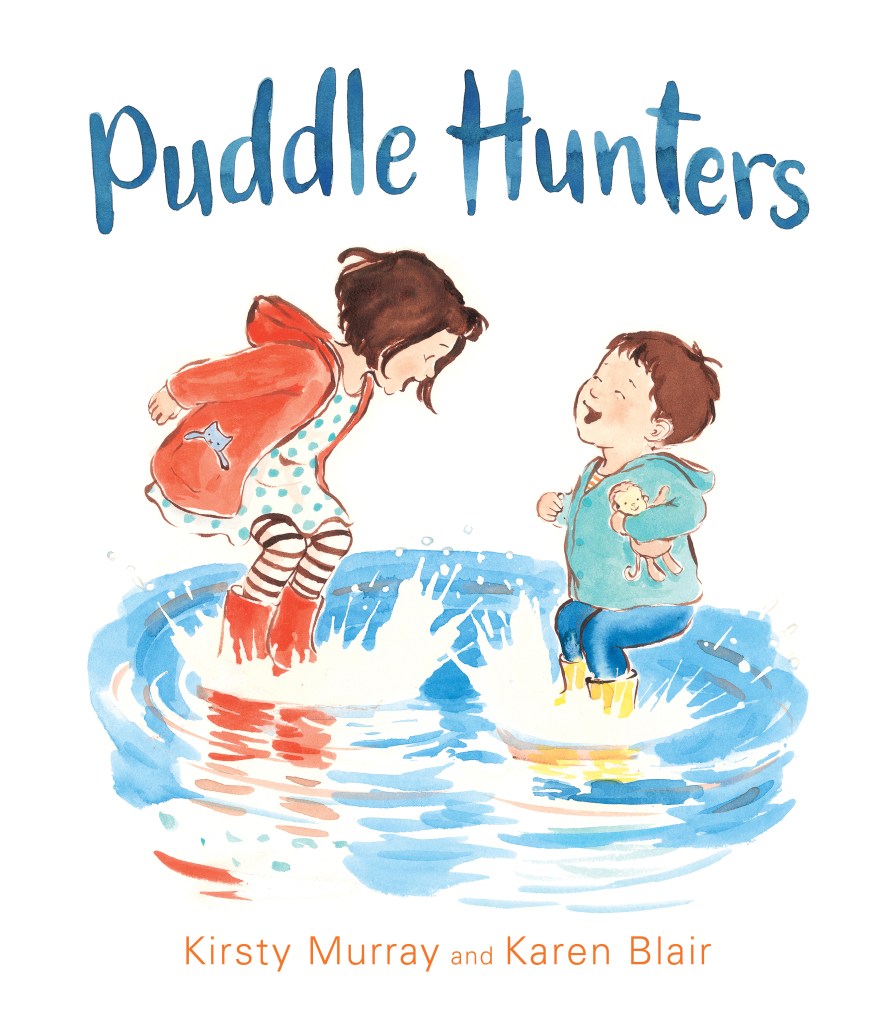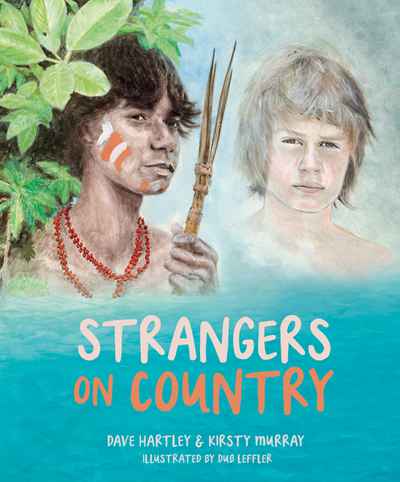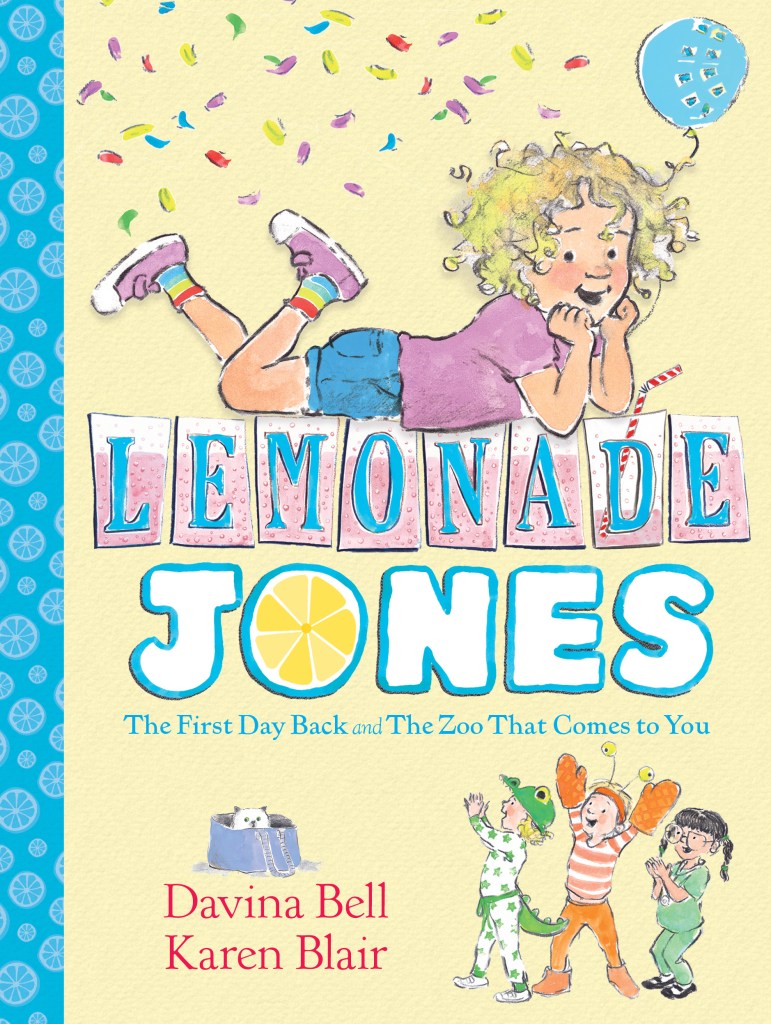Inside the CBCA Shortlist
Young children, and those sharing When Billy Was a Dog with them, will love this warm, appealing story.
Written by Kirsty Murray and illustrated by Karen Blair (published by Allen & Unwin) this picture book is shortlisted for the Children’s Book Council of Australia 2020 Early Childhood category.

Thank you for speaking to PaperbarkWords, Kirsty and Karen.
When Billy Was a Dog is an original boy-and-dog story. What makes it so distinctive?
Kirsty When my eldest son, Billy, was a small boy he longed for a dog. When I said he had to wait until he was older, he decided to be a dog, just like Billy in the book. Every playful puppy moment in When Billy Was a Dog is based on things Billy did during his ‘dog phase’. Billy is a grown-up now but over the years I’ve observed many small children impersonating the animals they’d like to have as pets – pretending to be cats, dogs and even birds and bunnies. The story of ‘Billy’ was originally conceived as a possible ‘Aussie Nibble’ or small chapter book and was a couple of thousand words in length with many additional scenes that are not included in the picture book. But I couldn’t find the right shape for the story and so I put it aside for several years.
I revisited the idea after watching my (then) five-year-old next-door-neighbour, Thomas, playing with his new puppy. Thomas’ puppy, Jett, was the inspiration for Boots. Watching the affection between Thomas and Jett made me dig out the old draft of the story of a boy and his dog and begin to rework it into a picture book. I think the fact that the story draws so heavily on real life makes it connect with young readers who recognise themselves in the character of Billy.
This book is also about the deep connection that small children can feel for animals and the intense longing for a pet. It’s about puppies, families, neighbours, being playful and using your imagination.
Many small children that long for pets (or even those that already have a pet) go through a stage of being the animal they most admire. I think it’s emblematic of their identification with all living creatures. And it’s very cute. What could be cuter than a kid in kitten ears or a child wagging a fluffy tail?
The title has been carefully worded. What is its significance?
Kirsty When Billy Was a Dog was originally a working title but when it came to finalising the title, everything else I tried felt less evocative. The publisher suggested various titles that included ‘Woof!’ but either they’d been used for other books or I didn’t like the rhythm. I liked the way When Billy Was a Dog is a little provocative, suggesting to the reader that perhaps Billy wasn’t always a dog.
How have you included humour?
Kirsty Small children are natural comedians so it wasn’t hard to incorporate humour into the story. I simply observed the way small children interact with the world. I love their sense of the absurd and their playful responses to everyday events. Since When Billy Was a Dog has been released, I’ve visited schools where whole classrooms of kids have enthusiastically demonstrated how to be a puppy with hilarious results.
What dog-like behaviours did you particularly enjoy showing in Billy?
Kirsty Every behaviour was based on an observed incident, if not with my own children, then with other kids I’ve known. It was fun to craft the scenes where Billy forces his Dad to play ‘fetch’. The moments when Billy chased his tail, dug up the garden and pretended to lift his leg to pee on a fence were all great fun to write.
Kirsty, could you describe the relationship between Billy and his parents?
Billy has a loving and playful relationship with both his parents. They’re patient but not indulgent with him and though they humour his cheekiness, they also know where to draw the line.
Karen, Kirsty has created an endearing child in Billy. How have you shown this quality in your illustrations?
Kirsty’s writing suggested such a relatable young child who uses play to express a strong desire (for his own dog), which is cheeky and very endearing. I wanted to show in my illustrations, through Billy’s actions and expressions, that he was an active, creative but ultimately gentle boy. I tried to use the other characters to show a relationship, through the parent’s responses, Mrs Banerjee’s warmth and through his dog friend Fluff’s reactions that Billy had many loving relationships.
Kirsty, what is the importance of Billy’s neighbours – Mrs Banerjee and Fluff?
Mrs Banerjee was a lovely character to create. She is a mixture of a number of older friends and neighbours of mine. As communities are more transient than they used to be, many children have lost the sense of connection with their neighbours that I experienced as a child. I feel very lucky that I’ve had the chance to watch my small neighbour, Thomas, grow from a baby into a kind and thoughtful boy so perhaps there is a bit of Mrs Banerjee in me, too.
How did you collaborate – generally and with details such as portraying an Australian multicultural society?
Kirsty We talked a lot about how to portray Billy’s community to ensure that it reflected contemporary children’s lives. I’ve spent a lot of time in India. While working on When Billy Was a Dog I read Bambi, Chops & Wags: how three dogs trained a family. It’s written by one of my favourite Indian children’s authors, Ranjit Lal, and it inspired me to make Billy’s neighbour from an Indian background. I imagined that Mrs Banerjee was from Kolkata in Bengal and so sent Karen some images of a few different friends from India who looked a little as I’d imagined the character. I also wanted to ensure she dressed like a modern, Indian woman. Mrs Banerjee is wearing a short kurta in the illustrations, which is a very comfortable and stylish item of clothing.
Karen It was wonderful to have Kirsty’s feedback and input when we were designing Billy’s lovely neighbour, Mrs Banerjee. We talked about appropriate hairstyle, clothing, and general feel of the character.
Karen, what media have you used?
I chose charcoal for the linework as it has a lively, loose quality which can convey both movement and emotion. The colour is done with gouache paint which can be applied as strong flat colour or more loose, watery colour.
Karen, why have you featured a lovely light blue colour throughout the pictures?
I wanted a colour scheme that was both bold and bright but also natural. It needed to complement colours of dog fur and also the lovely scruffy red hair I chose for Billy. Nature has some pretty incredible colour schemes so I looked to one of my favourite places, the South west coast of WA which has water with a variety of turquoises and blues, as well as beautiful gingery and brown coloured rocks and lovely pale sand. It formed the fairly limited palate for the book, and I chose to contrast Billy and Fluff against backgrounds of blues and turquoise (including the clothes of adult characters) so they would stand out from their surroundings, to emphasise their action.
What impact has being shortlisted for the CBCA Early Childhood award this year had on you or your book?
Kirsty It’s a wonderful honour and I’m so glad it will bring the story to the attention of more readers. It’s a little bit of a shame that the announcements this year coincided with the Covid19 lockdown as it’s meant it’s been impossible to visit schools and libraries but the great thing about the CBCA is that they are such an adaptive and energetic organisation. I really admire the way they’ve worked around the challenges that the pandemic has confronted us all with and have continued to promote the shortlisted books.
Karen The CBCA shortlisting is a huge honour and has a wonderful impact on a book. It opens up its audience to readers all across the country, especially through the hard work of librarians who often show-case the book in the lead up to Book Week. I’m so looking forward to visiting schools and libraries this year to share my process for When Billy Was a Dog and do some fun charcoal drawing with children.

You both collaborated on Puddle Hunters. Could you briefly describe this picture book, which would also be ideal for readers of When Billy Was a Dog.
Kirsty Puddle Hunters is about the joy of playing outside and the excitement of finding a glorious puddle to jump in. It was selected by the Victorian Government for inclusion in the Premier’s baby bundle so small children and their parents from all across the state might feel inspired to explore the great outdoors.
I love working with Karen. We are so much on the same wavelength that details that I imagined but didn’t describe in both When Billy Was a Dog and Puddle Hunters magically appeared in the illustrations.
Karen Puddle Hunters was a delight to work on and Kirsty really captured the universal joy we all feel when we find and splosh in a puddle. It is such a great reminder to parents and caregivers to get kids out in nature, getting dirty and having fun. It was so fun to play with brown ink, blowing and splashing it around. I used a few watercolour techniques, my own way of “playing with water.” It was amazing when it was selected by the Victorian State Government as one of the books in their “Baby Bundle” for all new babies. It’s also so wonderful that it is now available as a board book – perfect for little toddler hands! It is very glossy and looks perfect in this format.

Could you both tell us about some of your other books?
Kirsty My latest book, Strangers on Country, was published by the National Library of Australia in April. I collaborated with Dave Hartley, an Indigenous author from Queensland, to present five true stories about Aboriginal families that adopted shipwrecked Europeans in the 18th century and cared for them for between 4 and 17 years. The book is exquisitely illustrated by Dub Leffler. It’s an important non-fiction book for young people and I hope it finds many readers.
Last year, Kids Who Did, a collection of true stories about amazing kids was published by Allen & Unwin. My last novel was a YA historical fiction – The Year it All Ended – set in 1919. I enjoy exploring different ways of sharing stories with readers whether fiction, non-fiction or in picture book form.

Karen Some of my recent books include Lemonade Jones (book 1 & 2), by Davina Bell, which is a really fun pair of junior fiction books (published by Allen and Unwin) great for early readers around 5-7 years old. This year a new 8 book series was released by Penguin called Aussie Kids series, made by authors and illustrators from all around Australia. The book I illustrated is called Meet Eve in the Outback by Raewyn Caisley. The series features loads of great Australian creators and wonderful diverse stories and characters.
What are you writing or working on now?
Kirsty I’m currently working on several picture book manuscripts which I hope that Karen will illustrate eventually. I love working with Karen – we are very much on the same wavelength. I’m also working on two different novels for children. One is magical realism and the other is an historical fiction about industrial Melbourne, including the Bryant & May match factory and other iconic Melbourne places.
Karen I have written a book called Train Party which I am currently illustrating, which will be published by Penguin Random House next year. It is set at a miniature railway and is a rhyming text for early childhood readers. My 3 year old son is mad about trains so I have lots of inspiration and am learning a lot! It is wonderful to have the chance to be both author and illustrator again.

What have you been reading that you would like to recommend?
Kirsty I just read Kate Constable’s latest novel, The January Stars. It’s a beautiful, heart-warming story about two sisters and their grandfather. My other recent favourite is Lian Tanner & Jonathan Bentley’s new picture book Ella and the Ocean. It is so moving that I cry every time I read it (from happiness, not grief!).
How can your readers contact you?
Thanks for your wonderful responses, Kirsty and Karen.
When Billy Was a Dog is a book highly deserving of CBCA shortlisting. It understands and thoughtfully depicts the experience of a child longing for a pet. The story is delivered with both child and adult appeal.

When Billy was a Dog is an absolute favourite of Pippa. She keeps coming back to it and it’s been interesting watching her appreciate the humour of situation as she gets older. The end papers with all the different dogs are very compelling too.
LikeLiked by 1 person
Thanks for your feedback Ruth. Glad PIppa enjoys it so much. It is a very special book.
LikeLike